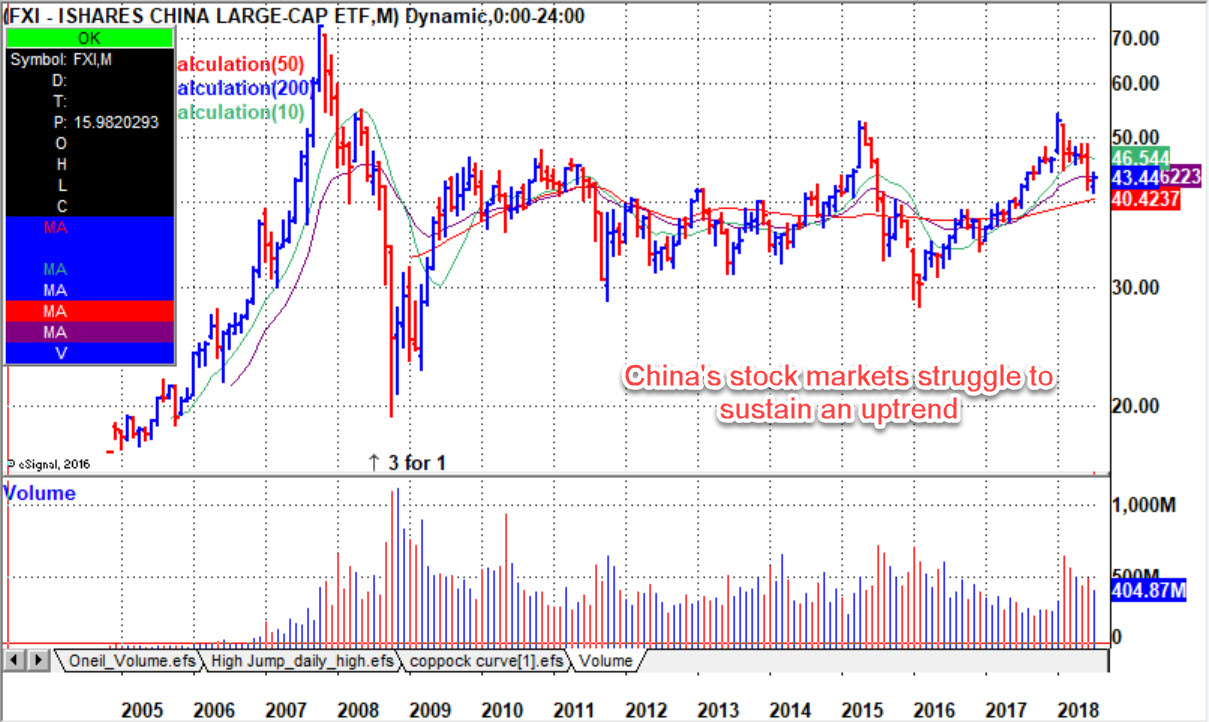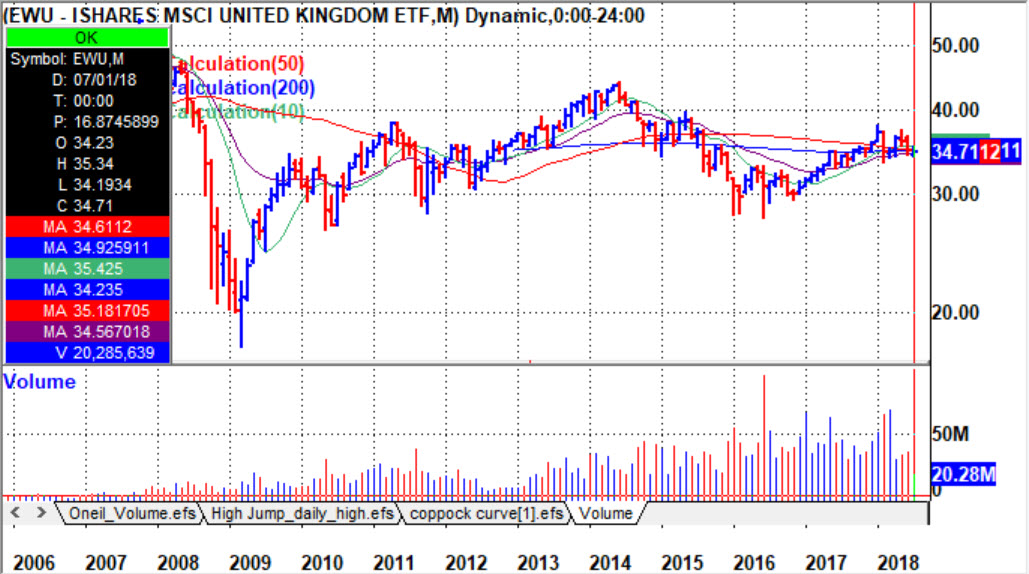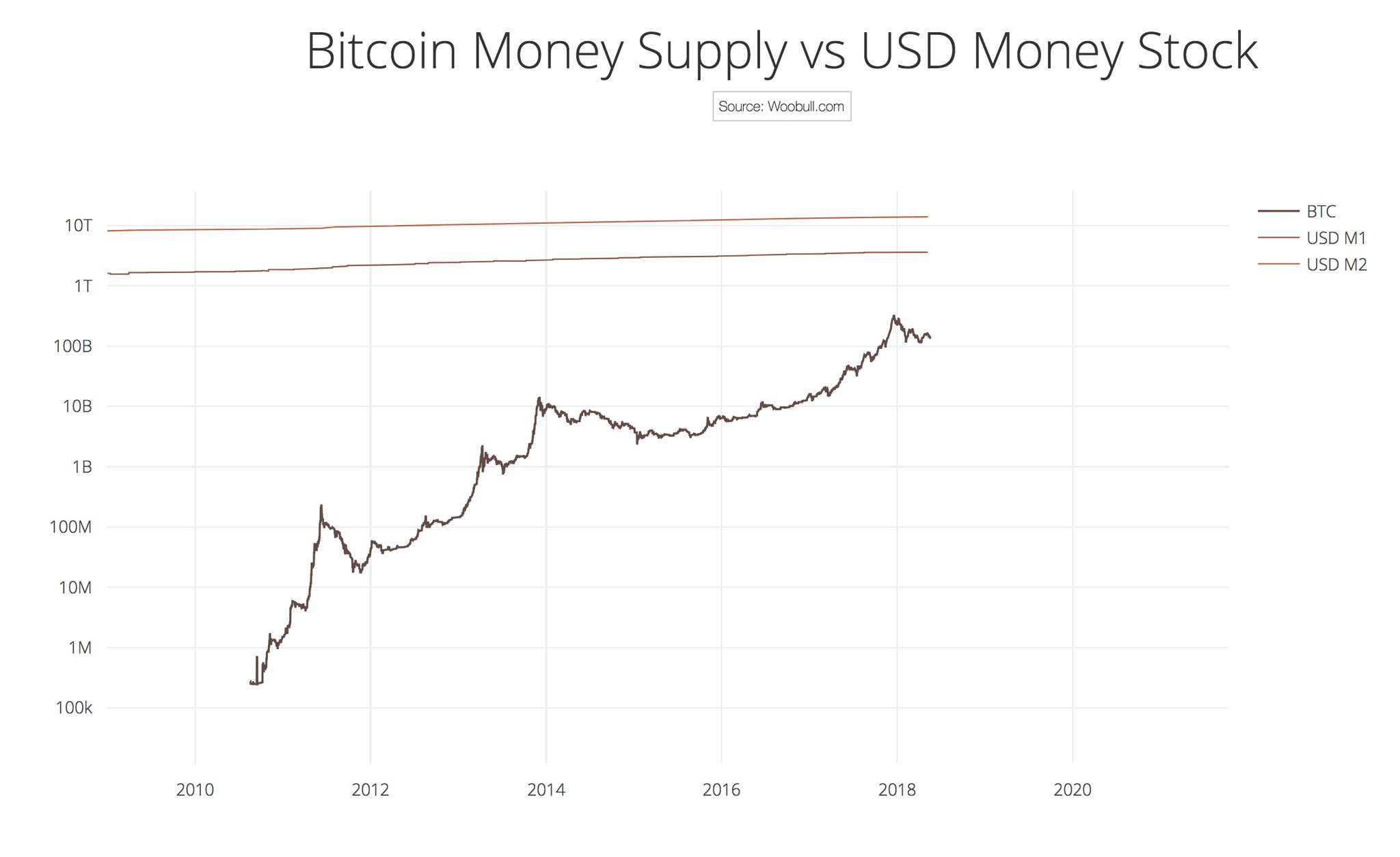CryptoEvolution™: Why Bitcoin Will Overtake Fiat
First, There Was QE
Two things happened after the financial collapse of 2008. First, the US Federal Reserve started printing money in furious fashion to rescue banks and businesses “too big to fail.” The extreme amounts of excess capital which found its way into stocks and bonds put a floor on the US stock market which found its lows in early 2009.

Thus began the chapter of quantitative easing, aka QE, culminating in historically low interest rates and record levels of debt. Since then, the US market being the tallest standing midget has reaped the greatest benefits while the rest of the world’s markets struggle by comparison. Here is what China’s stock markets have been doing since the initiation of QE in late 2008:

The situation over in the United Kingdom is not much better:

If the last few thousand years of history is any guide, when the world has taken on this much debt, collapse has always been the inevitable conclusion. One of the most famous cases is the rise and fall of ancient Rome. The Dark Ages came as a result, lasting hundreds of years.
Luminaries such as Ed Seykota whose seminal work, “Govopoly in the 39th Day” suggests inevitable collapse along with major transformation. In pond ecosystems, duckweed doubles each day. In the first 20 days or so, it goes unnoticed. But by day 30, it is clearly a hindrance. By day 39, duckweed doubles once more and suffocates all life in the pond by day 40. Seykota equates today’s overreaching, overregulated, bureaucratic governments to duckweed. Others such as Jim Rogers, Bill Gross, and Ray Dalio share similar views.
Second, There Was Blockchain
Blockchain technology is the counterbalance to the collapse and the key ingredient to the evolution of existing platforms into much higher orders of efficiency. Blockchain is the beating heart of bitcoin. When you remove third party middle men and transact on a peer-to-peer basis, far greater efficiencies can be achieved. This was one of the primary incentives behind Satoshi Nakamoto creating bitcoin in 2009 as an answer to the financial crisis of 2008. I discuss this at some length here.
Limited Lifetime of Fiat
Fiat currency has an average lifetime of 40 or so years. In today’s world, Ray Dalio of Bridgewater is predicting that there will be a major global devaluation of fiat within the next 2-3 years based on his studies of the long term debt cycle of which he says we are at a major tipping point. This is not difficult to accept if one remembers the last time we were at a tipping point when the US government single-handedly devalued the dollar by 41% overnight in 1934 at the height of the Great Depression. That was only 84 years ago. While the US Federal Reserve has ended its QE program, global central banks continue to print at near record levels simply because their respective economies remain stuck, even after the record levels of QE. So while central bank heads continue to suggest a meaningful deceleration of their respective QE money printing programs, these heads are politicians first so must say whatever it takes to keep markets calm.
So despite “healthy” looking inflation and growth figures, central bank heads know they are unable to reduce QE since these figures are greatly distorted. The recent second quarter US GDP pointed to an expansion of 4.1%, in line with consensus. This is more than twice the 2.0% expansion seen in the first three months of the year and its strongest since the 5.2% reading in the third quarter of 2014. Yet despite the strong reading in Q3 2014, the economies at home and abroad continued to struggle. The song remains the same today. CPI figures are grossly distorted suggesting inflation at levels much lower than reality. This in turn artificially inflates the GDP numbers. US markets reacted negatively to the 4.1% figure.
It has been suggested that the world has been in global recession for a number of years since one must subtract real inflation from GDP figures to arrive at the correct GDP figure. Inflation on basic goods has risen well past the suggested 2% or so rate over the years, thus if actual inflation is closer to 4 or 5%, subtracting this from GDP figures would result in flat to negative growth.
The Rise of Bitcoin
As an answer to the lackluster growth and egregious amounts of money printing that has occurred since late 2008, the price of bitcoin which was set at the cost of electricity back in 2009 at a price of $0.0007 per bitcoin has climbed to around $8000 today. Thus $1 invested in 2009 would today be worth over $10 million.
Bitcoin’s “killer app” is its store of value. It is deflationary. No government can print more of it. It has a fixed supply. It is decentralized. Centralized systems which include centralized governments and corporations are inferior since decentralized, open source, trustless, p2p, censorship resistant, private, secure protocols will always win over centralized, closed source, third party, insecure platforms.
Bitcoin’s utility as a method of exchange is the last stage that will come once mass adoption takes place. Of course, adoption by the masses is always the last phase of any S-curve technology.
So while bitcoin has “died” more than 150 times based on news accounts since 2011, and has suffered multiple corrections exceeding 75%, with two corrections as steep as 94%, it nevertheless continues to defy by hitting new highs. It is currently in another bear market which could see new lows based on various metrics I use which I discuss here. That said, I include a number of major tailwinds that heading toward bitcoin which could see bitcoin find a major low and embark on a new crypto bull market sooner than expected.
Bitcoin at $250,000 to $1,000,000 by 2022
The CEO of Twitter and Tim Draper both have stated bitcoin will overtake fiat within the next 5 to 10 years. More recently, Tim Draper predicted bitcoin will hit $250,000 by 2022. This is less than my $1,000,000 prediction by 2022 but still within an order of magnitude since with bitcoin, it’s all about orders of magnitude than multiples.
Below is an exponential graph of how bitcoin’s valuation trajectory could overtake M1 and M2 money supply within the next few years:

QE is a legalized Ponzi scheme that devalues fiat while bitcoin is disguised as a Ponzi scheme as it overtakes fiat… or as Naval Ravikant has said, “Bitcoin is a tool for freeing humanity from oligarchs and tyrants, dressed up as a get-rich-quick scheme.”
We’re going into a new era. Buckle up!
by Dr. Chris Kacher
www.virtueofselfishinvesting.com
The Evolution Will Not Be Centralized™
View the article from the CFI.co app (download from iTunes or Google Play).
About the Author – Dr Chris Kacher Cryptotech / Nuclear physicist turned stock market wizard (KPMG audited) / Top 40 charted musician / Bestselling author
 Dr Kacher is CEO of Creative Group Trading, Inc., an investment and trading vehicle for cryptocurrencies. He founded one of the first Internet-based stock advisory services in 1995 then went on to generate triple digit % returns for 6 years in a row during the 1995-2000 period before moving to cash for most of the 2000-2002 bear market. He has published numerous works including 4 books through Wiley & Sons including Bestseller “How We Made 18,000% in the Stock Market” available in five languages.
Dr Kacher is CEO of Creative Group Trading, Inc., an investment and trading vehicle for cryptocurrencies. He founded one of the first Internet-based stock advisory services in 1995 then went on to generate triple digit % returns for 6 years in a row during the 1995-2000 period before moving to cash for most of the 2000-2002 bear market. He has published numerous works including 4 books through Wiley & Sons including Bestseller “How We Made 18,000% in the Stock Market” available in five languages.
Dr Chris Kacher has appeared in major business media including CNBC, Reuters and Bloomberg and was a regular contributor to MarketWatch among others until 2012-2013 when he became involved in the blockchain.
Dr Kacher received his PhD in Nuclear Physics from University of California at Berkeley. He co-created Element 110 on the Periodic Table of Elements and “confirmed” the existence of Element 106 which his team named Seaborgium after Nobel Laureate Dr. Glenn Seaborg who discovered plutonium and supervised Dr. Kacher’s work as a doctoral student at UC Berkeley.
You may have an interest in also reading…
Applied Science Private University (ASPU): Bringing Tomorrow’s Tech Specialists to the World’s Attention
Applied Science Private University (ASPU) was established in 1989 to prepare students from Jordan and abroad to become specialists in
Middle-Market Direct Lending
A Lucrative Alternative Asset Class The US is home to some 200,000 companies dubbed “middle-market” — typically with EBITDA up
New Wealth Wave: How the Rich Are Getting Richer — and Younger
The number of ultra-wealthy individuals is increasing, and their average age is dropping. Why, and how? From the heads of



















































































